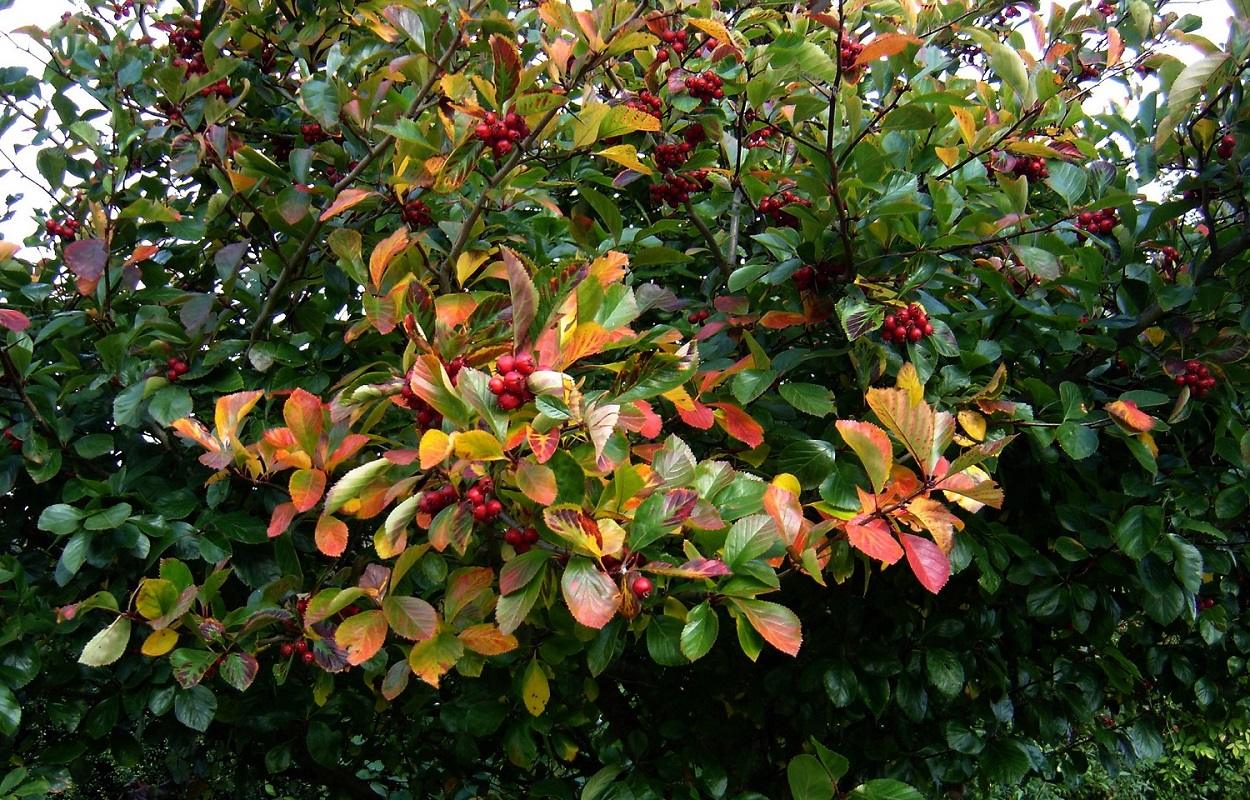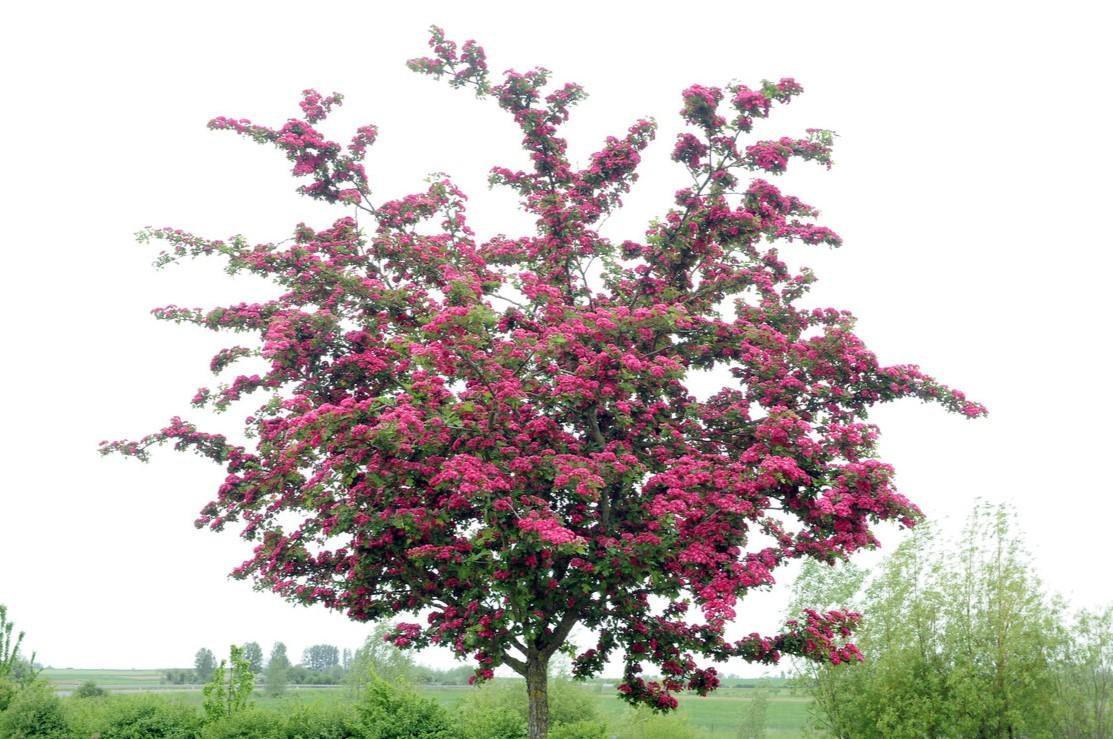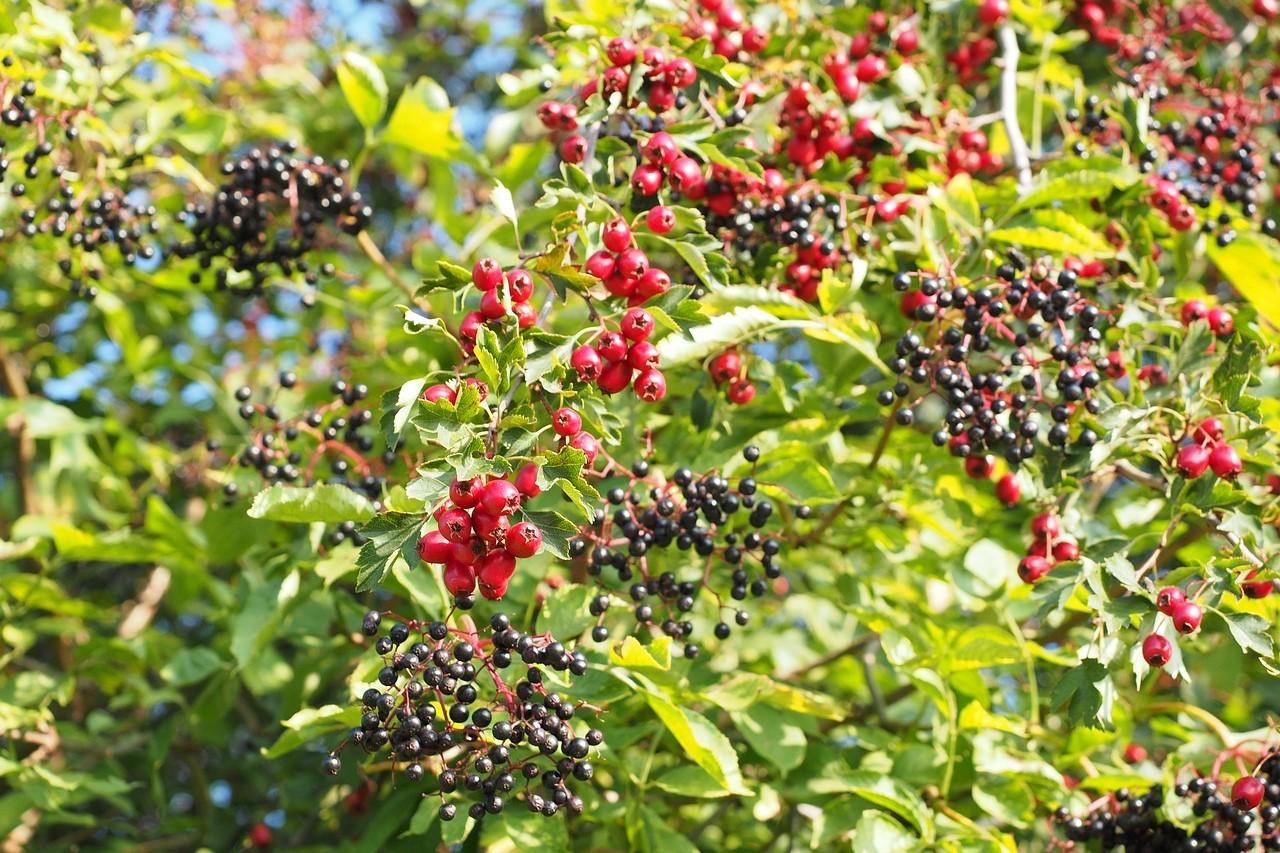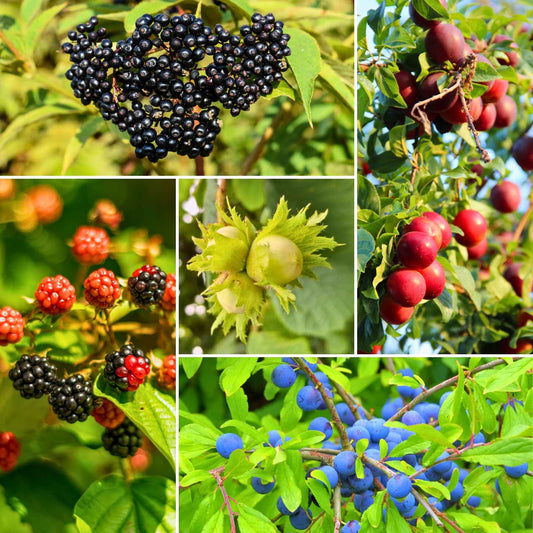The Best Hawthorn Trees to Grow in the UK
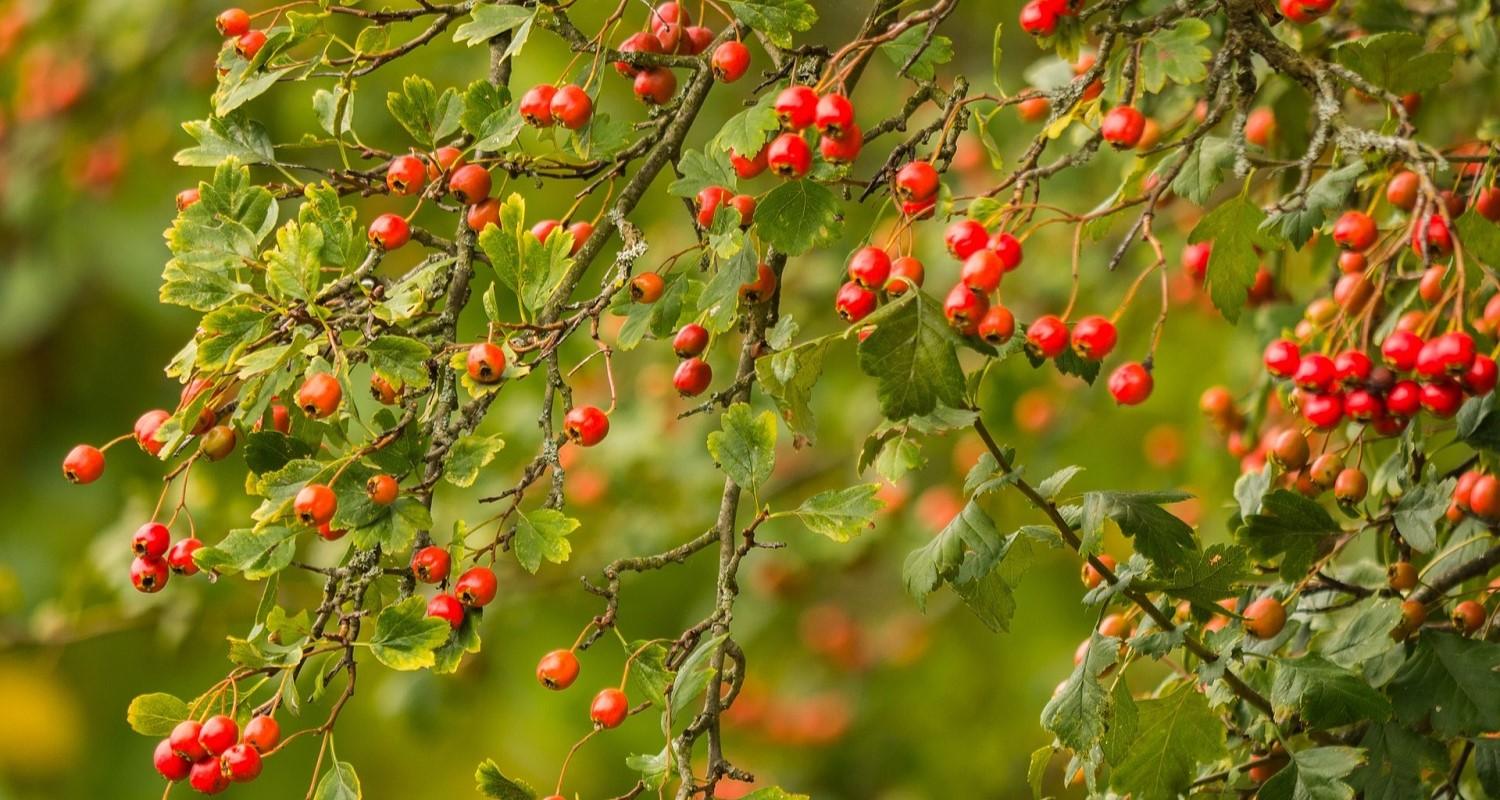
Hawthorn trees put on one of the best floral displays of the spring, with masses of pink, white or even scarlet blossom, but they’re far more than the sum of their looks. One of the best native trees you can plant for wildlife, a single hawthorn tree can support over 150 different insect species, including bees, butterflies, beetles and moths. Birds such as fieldfares and redwings will also flock to hawthorns for their bitesized red haws in the autumn.
Grown in the field in the traditional way, our hawthorns are incredibly hardy and tolerant of almost all conditions - combined with their naturally compact form, this makes them a solid choice for any garden. Our tree grower John has been growing hawthorns for fifty years, so we asked him which varieties are the best for small spaces, blossom and more, while picking up some expert tips on how to get the most from them.
Jump to:
- Best for blossom
- Best for small gardens
- Best for wildlife
- Best for autumn colour
- Best for hedges
- How to get the most from your hawthorn
Best for blossom: Crimson Cloud Hawthorn
Crimson Cloud Hawthorn is an RHS award-winning hawthorn tree with sharp thorns growing on its branches and lush, glossy, deep green leaves that turn golden yellow and bronze in autumn. But we’re here for the blossom - and it’s spectacular! From late spring, you’ll barely be able to see the branches for clouds of crimson red blossoms with white centres. As the flowers mature, they turn from red through pink to white. If you prefer white blossom, one of the best is the Double White Hawthorn Tree. Both are native British varieties that provide year round interest and make a perfect wildlife-friendly feature tree.
Best for small gardens: Broad leaved Cockspur Thorn Tree
This lovely compact tree grows to just 5 x 4m and can be pruned smaller, making it perfect for any size of garden. Broad leaved Cockspur’s glossy, dark-green foliage turns to warm shades of yellow, orange and copper in the autumn and flowers in May, with plentiful clusters of white blossom. A worthy winner of the RHS Award of Garden Merit, this fully hardy and low maintenance tree is so versatile - it will thrive in even the most difficult spots including coastal, exposed, dry and damp sites. It’s also one of the best for fruit, with bright crimson haws that stick around well into winter.
Image source: Flickr.
Best for wildlife: Red Hawthorn Tree
One of the most richly flowering UK native trees, award winning Paul's Scarlet is a hit in every season. Compact and well shaped, it grows to around 8m high but can be pruned to fit any garden.
As you’d expect, the blossom is a real head-turner - fully double flowers in a luscious deep scarlet that cover the branches throughout May and June, with dark green glossy foliage that turns sunny yellow and bronze in autumn. This is also one of the best trees you can plant for native wildlife - bees love the flowers and birds come for the all-you-can-eat fruit buffet in autumn - the sharp thorns also give them a safe nesting place amongst its branches.
Look out for beetles like the hawthorn shieldbug, violet ground beetle and Devil’s coach horse; brimstone and peacock butterflies and birds such as greenfinches, wrens, robins, song thrushes and yellowhammers. Paul’s Scarlet makes an eye-catching feature tree in your front garden or at the back of a mixed flower border - plant it where you can watch the wildlife from your windows all year round.
Best for autumn colour: Hybrid Cockspur Hawthorn
This small, bushy tree looks great in every season, with clusters of sweet scented, creamy white flowers in May and June and deepest green glossy foliage throughout the summer. But it’s in autumn that the Hybrid Cockspur really sets itself apart from other hawthorns, when its leaves take on a glorious range of red, purple and orange tones before falling and the branches are dotted with red haws that you can make into jelly, cordial and wine - or leave them for the birds. Being a well-formed tree with an open, pyramidal crown, your tree will even look good after the leaves have fallen, lending structure to the winter landscape with its slender branches and spiny stems.
Best for hedges: Common Hawthorn
One of our native hawthorn varieties, Common Hawthorn makes an excellent hedge either on its own or combined with other native deciduous trees. It’s fast growing and will quickly form an effective natural barrier due to its dense foliage and thorns. Using hawthorn as hedging is a great way to introduce more wildlife to your garden - bees love the scented white blossoms with pink anthers and you’ll quickly find birds and small mammals making their homes there, safe from predators. Trained as a hedge, hawthorn will reach between 1-5m.
How to get the best from your Hawthorn tree
1. Position
Hawthorn trees are able to thrive in any type of soil (even chalk) as long as it’s fertile and well drained. If your soil has a tendency to become waterlogged, mix some perlite or horticultural grit in with compost in the planting hole. In terms of light, this tree will be perfectly happy with a slightly shaded position, but you’ll get better flowers by planting your hawthorn in full sun.
2. Pruning
Good news - your hawthorn tree naturally forms a well-shaped canopy and doesn’t need much pruning. Simply check it over in late winter or early spring and prune out any dead, damaged, diseased or crossing branches. Wear gardening gauntlets (gloves that cover your wrists and lower arms) to avoid being spiked by the thorns.
3. Feeding
Hawthorns don’t usually need feeding unless the soil is poor, but they can benefit from a mulch of compost, manure or bark chips when planting and after yearly pruning. A scattering of general purpose, slow release fertiliser will also help a young tree to get established.
4. Watering
Give your hawthorn tree a good watering when you plant it, then again every other day for the first few months until it establishes a striking root system. You should then water it regularly during hot and dry weather for the first couple of years. After that your established tree will have developed its drought tolerance and will get by on rainwater.Last updated: 14/11/2023












